Media Resources
Media Contact
Sherlyn Rijos-Altman
Montner Tech PR
[email protected]
(203)226-9290
Index
Recent Press Releases
Press Resources
Additional Resources
Spokesperson Bio: Director, Jason Bohrer
Graphics & Videos
Recent Press Releases
- U.S. Payments Forum Spring Market Snapshot: AI Use Cases, Contactless Standards and Card-Not-Present Concerns (4/23/2024)
- Secure Technology Alliance Names Industry Luminary Christina Hulka as New Executive Director (3/19/2024)
- US Payments Forum Announces 2024 Steering Committee (1/23/2024)
- 2024 Identity & Payments Summit Agenda Explores How Industries Intersect Through Unified Identity, AI, Faster Payments, Authentication and More (1/22/2024)
- US Payments Forum Fall Market Snapshot: The Future of Digital Payments, Biometrics, AI and Mobile Point of Sale (12/6/2023)
Press Resources
For press use: Please feel free to use this language to accurately report on the following payments technologies. Attribution to the U.S. Payments Forum is optional.
EMV
How do I describe the U.S. move to chip cards?
The U.S. is moving to new chip cards based on a globally adopted specification called EMV, already in use in billions of payment cards worldwide, to enhance in-person payment security for consumers, merchants and issuers.
How can I describe the security features of chip cards?
EMV chip cards contain secure computer chips that validate the authenticity of the card and include a one-time use security code in every transaction, making chip payment data virtually impossible to use for counterfeit card fraud.
How can I talk about the status of the U.S. migration?
There has been steady progress in the U.S. migration to chip payments. Today, 9 out of 10 Americans are commonly using chip cards at more than one-third of U.S. merchant locations enabled to accept chip payments, and an estimated 79 percent of ATMs will have completed the migration by the end of this year.
Contactless Card and Mobile Payments
How do I describe contactless chip card payments?
Contactless chip card payments don’t require physical contact between a consumer’s EMV chip-enabled card and the point-of-sale (POS) terminal. Instead, the consumer holds their card within an inch or two of the terminal to complete the transaction wirelessly.
How do I describe mobile payments?
Mobile payments involve a mobile app on a phone or wearable that enables the phone to execute a payment transaction. Mobile payments don’t require physical contact between a consumer’s mobile device, and the POS terminal. Mobile payments may use Near Field Communication (NFC), bar codes or other technologies to complete a payment transaction.
How do I describe the relationship between NFC and EMV?
NFC is a communications technology that enables mobile payments on a mobile phone or wearable. As such, NFC is sometimes used to enable mobile devices to complete EMV transactions.
Are contactless chip card payments the same as NFC payments?
Contactless chip card payments are made using contactless EMV card technology, which is different from NFC. NFC is a communications technology implemented on mobile phones and wearables that enables contactless EMV payments using these devices at contactless POS terminals that accept contactless EMV chip cards.
Encryption
How do I explain encryption?
Encryption is the conversion of sensitive payment data to an alternate value so that the data has no value if the data is stolen. Only the trusted parties in the transaction – the issuer, processor, or merchant – have the keys to decrypt the data to see its original value.
How can I describe its impact of encryption on security?
Encrypting transaction data (both cardholder data and other data describing a transaction) can prevent criminals and hackers from discovering or tampering with sensitive payment data.
Tokenization
How do I explain EMV tokenization?
Tokenization is a form of data protection where sensitive information – the consumer’s primary account number (PAN, the number on the front of the card) – is replaced with a different numeric value, which is called a token. The token is used in place of the actual account details through all of the various payment systems involved in a transaction, eliminating sensitive data from payment transactions.
How can I describe its impact on security?
Tokens can be created to have limited use, such as for a single mobile device, making tokenization a very effective tool for minimizing fraud and the impact of data breaches. Today, tokenization is commonly used for mobile payments, and card-on-file merchants, so the original sensitive account data is not exposed to data thieves.
U.S. Payments Forum
How do I describe the U.S. Payments Forum?
The U.S. Payments Forum is a cross-industry body including all payments stakeholders focused on enabling the successful implementation of EMV and other emerging payments technologies in the U.S.
More information about the U.S. Payments Forum can be found in the FAQ.
Additional Resources
EMV
Contactless and NFC
- EMV and NFC: Complementary Technologies Enabling Secure Contactless Payments (Smart Card Alliance)
- Contactless Payments Security Questions & Answers (Smart Card Alliance)
CNP
- Near-Term Solutions to Address the Growing Threat of Card-Not-Present Fraud
- Near-Term Solutions to Address the Growing Threat of Card-Not-Present Fraud webinar
Tokenization
- Technologies for Payment Fraud Prevention: EMV, Encryption and Tokenization (Smart Card Alliance)
Spokesperson Bio: Jason Bohrer, Director
Jason Bohrer has served as the Executive Director for the Secure Technology Alliance and the U.S. Payments Forum since December 2020. Prior to joining the Alliance and the Forum, Mr. Bohrer cultivated a successful 27-year career in domestic and global roles focused on sales, operations and product innovation at companies such as: CPI Card Group, HID Global and Motorola, Inc. He has been actively involved with several key technology transitions across multiple industries including the contact and contactless EMV transitions in the U.S. payments industry and the adoption of smart card and mobile technologies in the global access and identity market. He has a Bachelors degree in Economics from the University of Texas at Austin and was also an inaugural member of the University of Chicago Executive Institute.
Graphics & Videos
| Resource Description | AVAILABLE FILES | |
|---|---|---|
| U.S. Payments Forum Logo |
 |
Online: 320×112 @ 72 DPI Print: 300 DPI EPS |
| Jason Bohrer |  |
Online: 800×1200 @ 72 DPI Print: 12″x13″ @ 300 DPI |
| Broadcast Quality Chip Card B-roll |
Online Preview | Half resolution MP4 (960×540) Full resolution MP4 (1920×1080) ProRes 422 LT (1920×1080) ProRes 422 (1920×1080) |
| Chip Card B-roll Suggested Script | Chip Card B-roll Script | |
| Chip Card Video |
Online Preview | Download MOV (1920×1080) |
| Chip Card Photo – 1 |
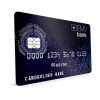 |
Online: 150×150 @ 72 DPI Print: 8″x4.5″ @ 300 DPI |
| Chip Card Photo – 2 |
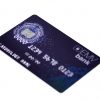 |
Online: 100×100 @ 72 DPI Print: 8″x5.4″ @ 300 DPI |
| Chip Card Photo – 3 |
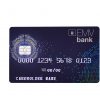 |
Online: 100×100 @ 72 DPI Print: 8″x6″ @ 300 DPI |
| Chip Card Photo – 4 |
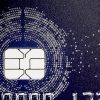 |
Online: 100×100 @ 72 DPI Print: 4“x2.5” @ 300 DPI |
| Chip Card Photo – 5 |
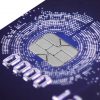 |
Online: 100×100 @ 72 DPI Print: 4″x2″ @ 300 DPI |
| GoChipCard.com Consumer Infographic | 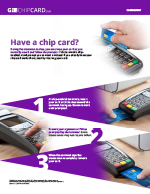 |
Download Printable PDF |
| GoChipCard.com Merchant Infographic | 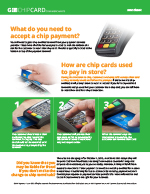 |
Download Printable PDF |
| GoChipCard.com Issuer Infographic | 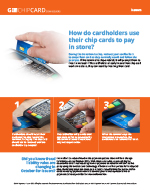 |
Download Printable PDF |
| How a Chip Transaction Works (infographic) | 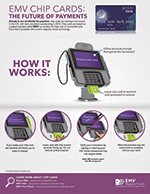 |
Download Printable PDF |
